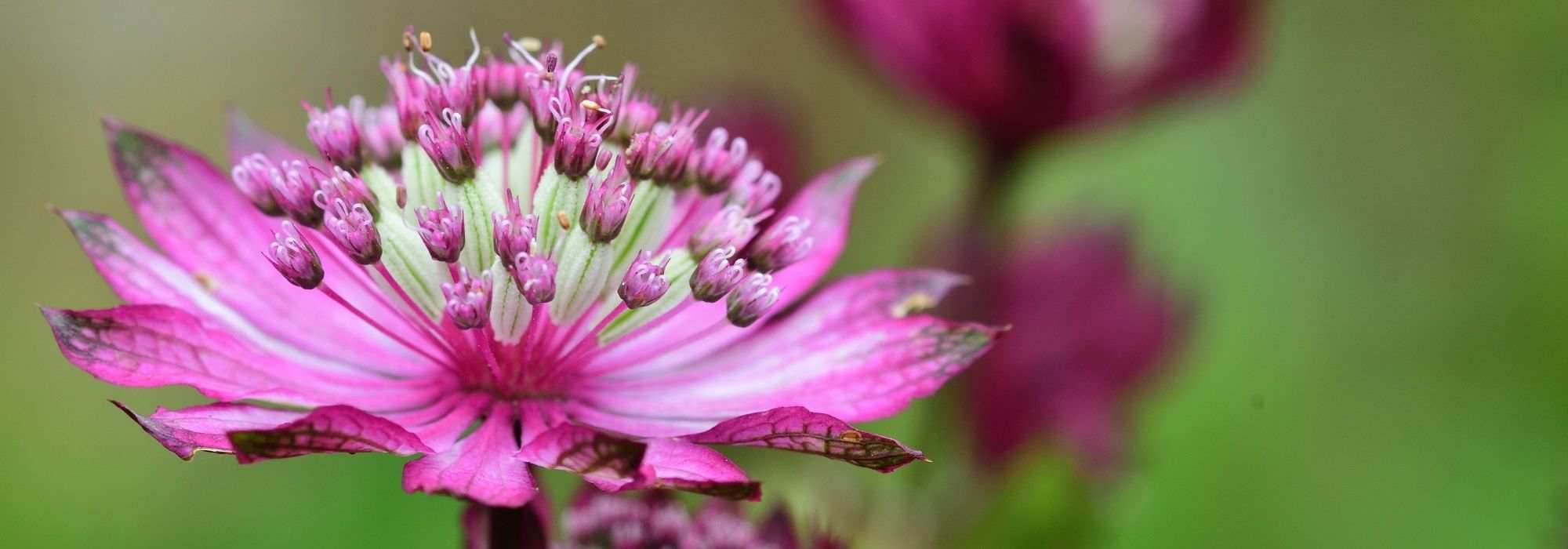
Pink Astrantias
5 varieties to discover
Contents
Distant cousin of carrot, the Astrantia is an umbellifer: it produces a long summer flowering in umbel. Generally pink, its flowers can have different shades of colour: very light pink as seen in Astrantia major ‘Rosea’, very dark and leaning towards red for Astrantia major ‘Ruby Wedding’, or slightly purplish like Astrantia major ‘Florence’. The palette of pink is vast. Beautiful and subtle, this perennial is a true gem: perfect for beginner gardeners, this plant native to the mountains is vigorous and robust, not very susceptible to diseases, easy-going and requires little maintenance. Here you will find our selection of 5 large Astrantias with pink flowers to inspire you!
Astrantia major 'Florence'
Astrantia major ‘Florence’ stands out from other pink Astrantias due to its unusual colour. Indeed, this recent cultivar, introduced in 2005, produces charming small flowers in pale pink umbels, with the peduncles (the small stem bearing the flower) displaying a lovely mint green hue. A crown of lavender pink bracts, heavily veined, surrounds the inflorescence, resembling a cushion of sewing needles. Note that its pink flowers, approximately 4 to 5 cm in diameter, are larger than the typical species. They make excellent cut flowers. Very graphic, Astrantia ‘Florence’ is a true masterpiece! This repeat flowering variety blooms from June to July, and again in September, provided that the faded flower stems are regularly removed during the summer. In a shaded border, Astrantia ‘Florence’ brings lightness and softness when paired with the very hardy Centaurea ‘John Coutts’, bleeding heart, the white Naples cyclamen groundcover, wood rush, and the spotted foliage of Aspidistra ‘Milky Way’.
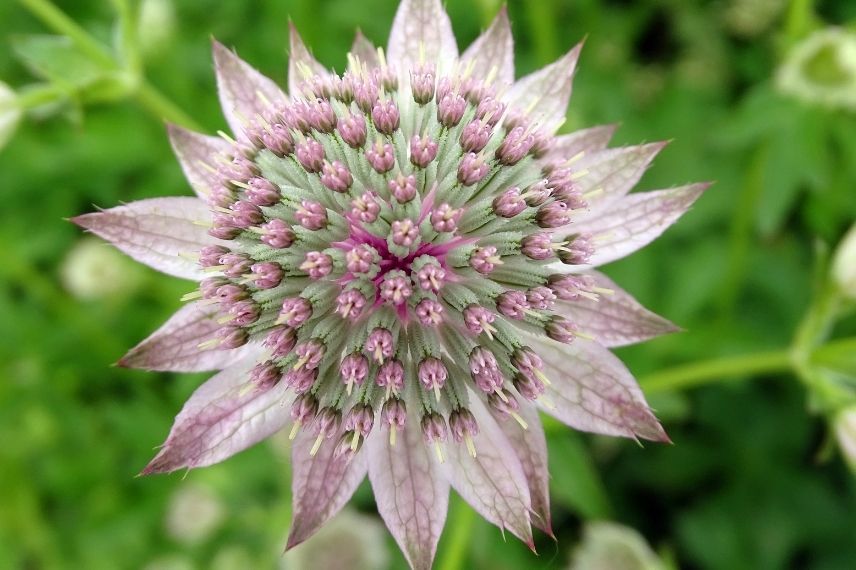
Astrantia major ‘Florence’
Astrantia major 'Ruby Wedding'
The Astrantia major ‘Ruby Wedding’ is one of the darkest pink Masterworts! Indeed, from June onwards, it dresses in a deep and vibrant burgundy-pink. Only a small touch of white appears at the base of each bract. These long, pointed bracts form a collar that cradles the tiny flowers gathered in umbels. In similar shades, we can also mention Astrantia major ‘Claret’ and ‘Hadspen Blood’, which are from closely related lines. From spring to autumn, its palmate foliage tinged with dark green forms a bush approximately 40 cm in all directions. Deciduous, it disappears in winter. The flower stems, however, reach a height of 60 cm. This perennial is perfect for cottage garden borders, accompanied by Woodland Sage ‘Blauhügel’ with its deep blue flowering, the Yellow Flowering Rose ‘Celina’, Nepeta faassenii ‘Six Hill’s Giant’, and Vinca minor ‘White Power’.
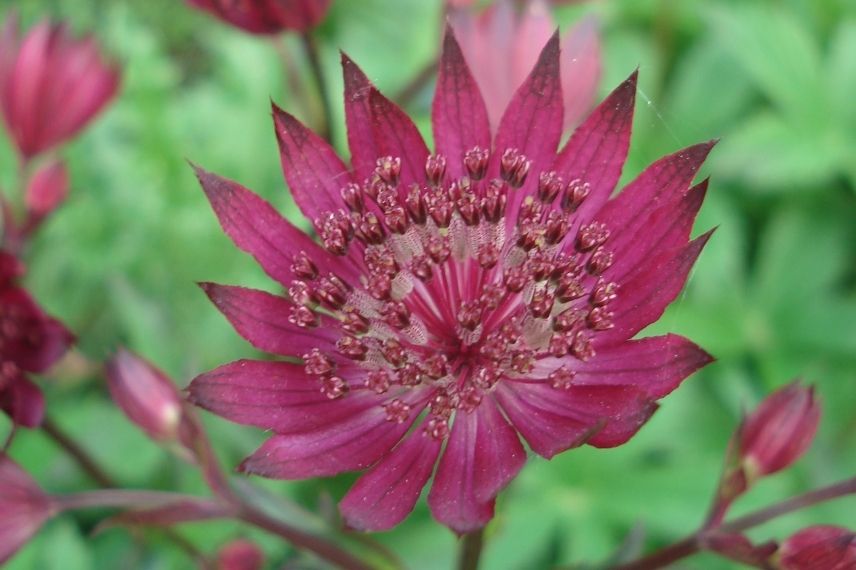
Astrantia major ‘Ruby Wedding’
Discover other Astrantia - Masterwort
View all →Available in 0 sizes
Available in 0 sizes
Available in 3 sizes
Available in 3 sizes
Available in 0 sizes
Available in 1 sizes
Available in 3 sizes
Available in 2 sizes
Available in 2 sizes
Available in 2 sizes
Astrantia major 'Star of Treasure'
Of modest size, Astrantia major ‘Star of Treasure’ is a perennial plant well suited for pot or container planting. At maturity and during flowering, its clump of leaves reaches about forty centimetres in height and width. The rich colour of this Astrantia, a blend of pink, purple, and red, brings vibrancy and cheer to a terrace or balcony. The dark green palmate leaves pair well with the very refined inflorescences. As Astrantia particularly enjoys cool soils, it is essential to monitor its watering closely if grown in a pot, especially in summer. Additionally, provide a deep container and place it in a shaded position. Plant this very hardy perennial (down to -15°C) with its compact, upright clump as a solitary specimen in its pot alongside other flowering plants: Carpathian Bellflower ‘Clips Blue’, Hosta ‘Stiletto’, Shasta Daisy ‘Broadway Lights’, and Heucheras.
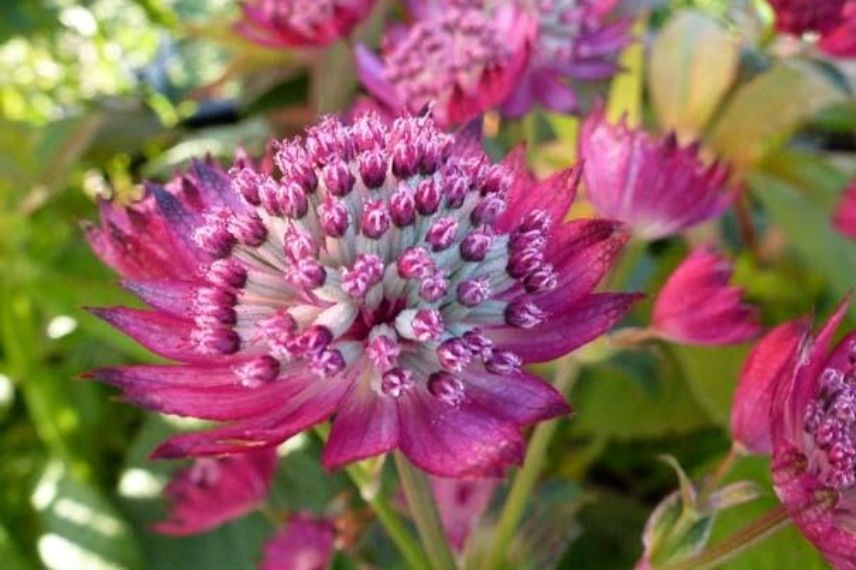
Astrantia major ‘Star of Treasure’ (photo Guido)
Read also
Astrantias: the largest umbelsAstrantia major 'Rosensinfonie'
The Astrantia major ‘Rosensinfonie’ is a German variety created in 1982. Larger than the previously mentioned Astrantias, it can reach heights of 70 to 80 cm. From June to August, its sturdy flower stems stand tall, providing an abundant flowering display. Although its star-shaped umbels are small, measuring no more than 3 cm in diameter, this Astrantia is full of charm. Poetically delightful, its inflorescences consist of large, pearlescent pastel pink bracts and small dark red flowers with purple highlights, creating a vibrant spectacle. Very hardy, this cultivar thrives in clay soils and is completely at ease in low-maintenance, damp, and partially shaded gardens. It can be imagined alongside Astilbes, Riverside Thistles, ‘Phantom’ Eupatorium, ‘Leonard’s Variety’ Avens, and grasses such as Acorus gramineus ‘Ogon’ and Variegated Glyceria.
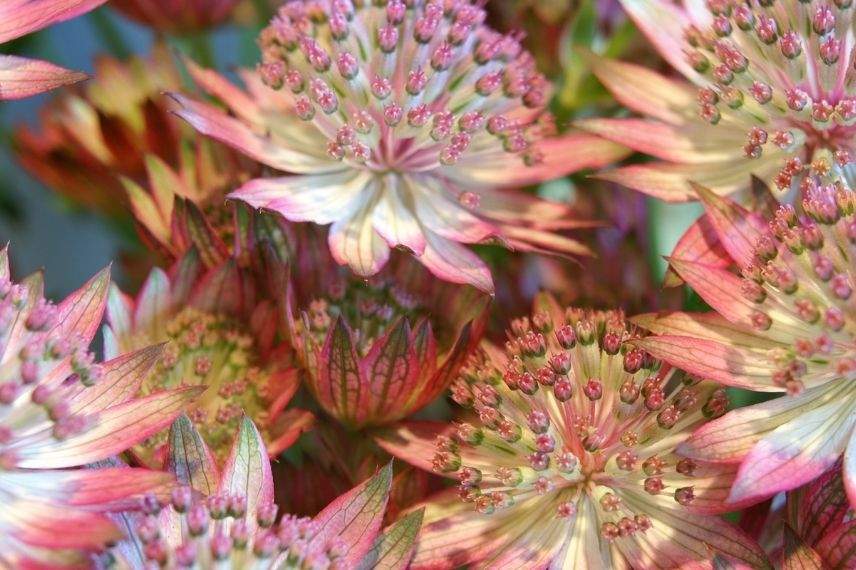
Astrantia major ‘Rosensinfonie’ (photo kanonn)
Astrantia major 'Rosea'
The best for last: the graceful Astrantia major ‘Rosea’. This is our favourite Astrance! From June to August, sometimes even until September, the flowers of this delicate “gem” are adorned with a gentle colour combination. Soft pink mingles with white, along with hints of green at the tips of each bract. Elegance and charm, its beauty speaks for itself. Very floriferous throughout the summer, this perennial allows for the creation of numerous and lovely fresh or dried cut flower arrangements for the home. Give a romantic touch to your garden and highlight this Great Astrance with medium green lobed foliage by pairing it with perennial plants in pastel shades, such as Virginia Speedwell ‘Temptation’, Astrantia major ‘Buckland’, Persicaria amplexicaulis ‘Rosea’, Lythrum salicaria ‘Blush’, and Stachys monieri ‘Rosea’.
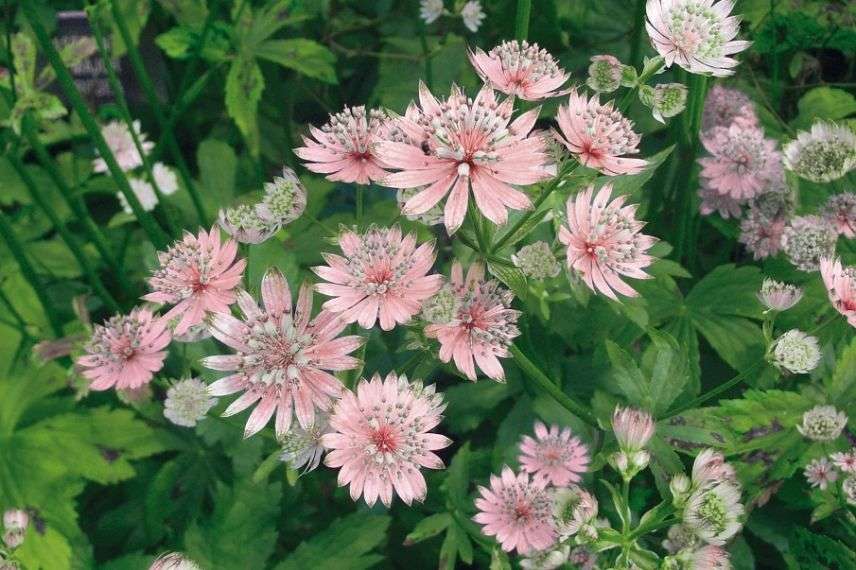
Astrantia major ‘Rosea’
- Subscribe!
- Contents
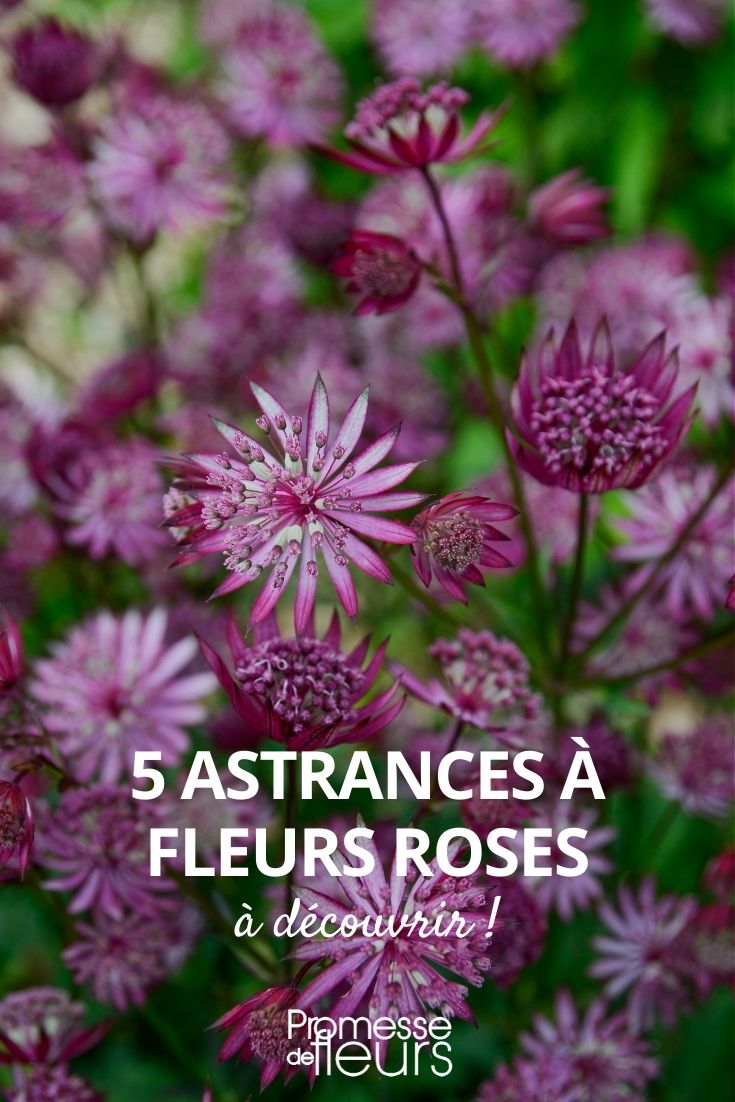































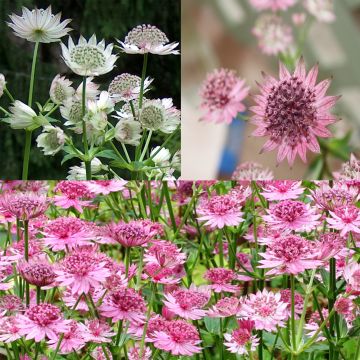
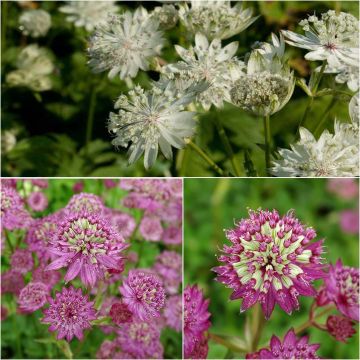
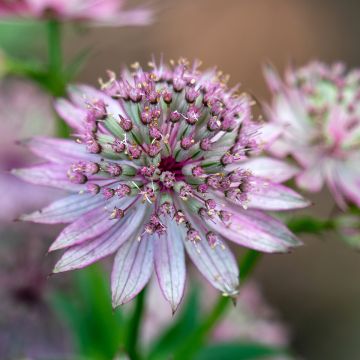
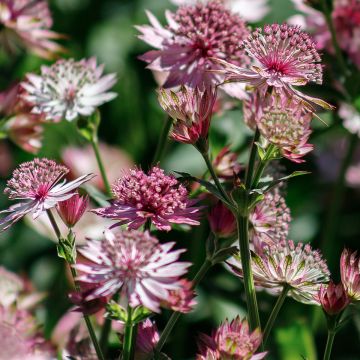
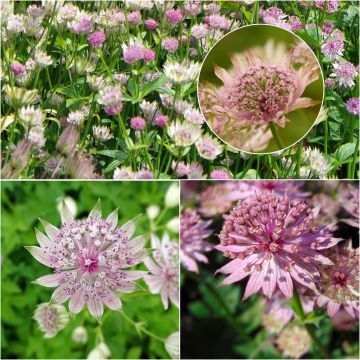
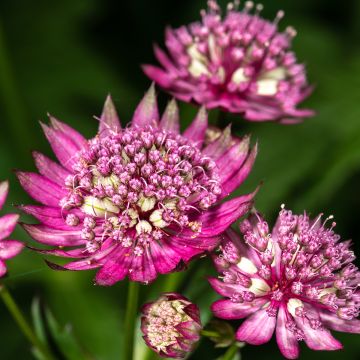
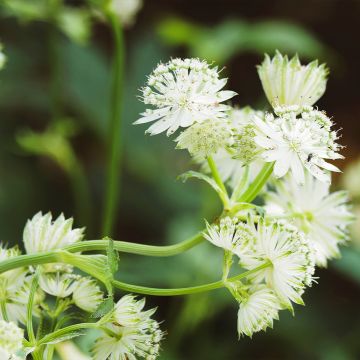
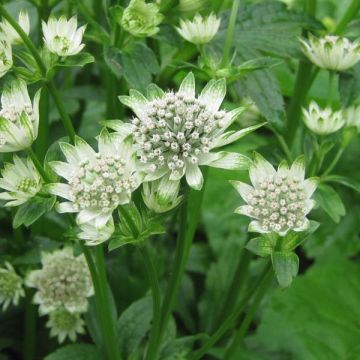
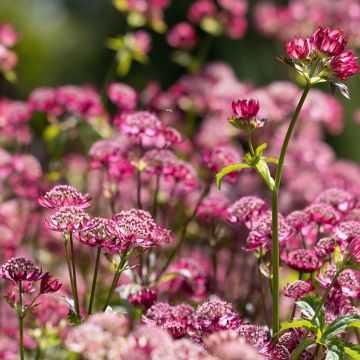
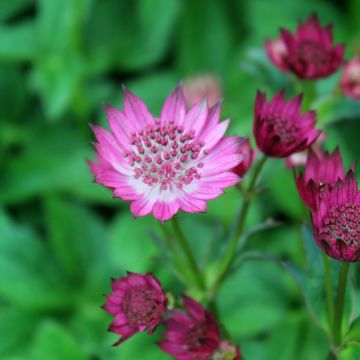
Comments